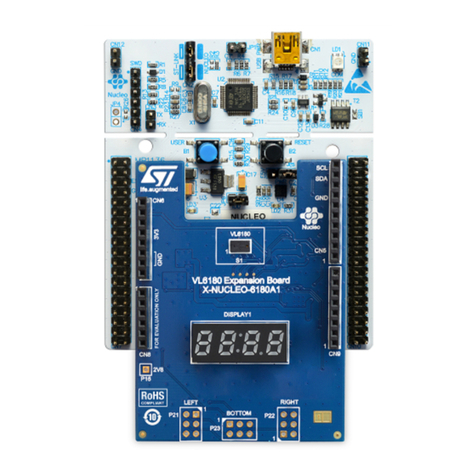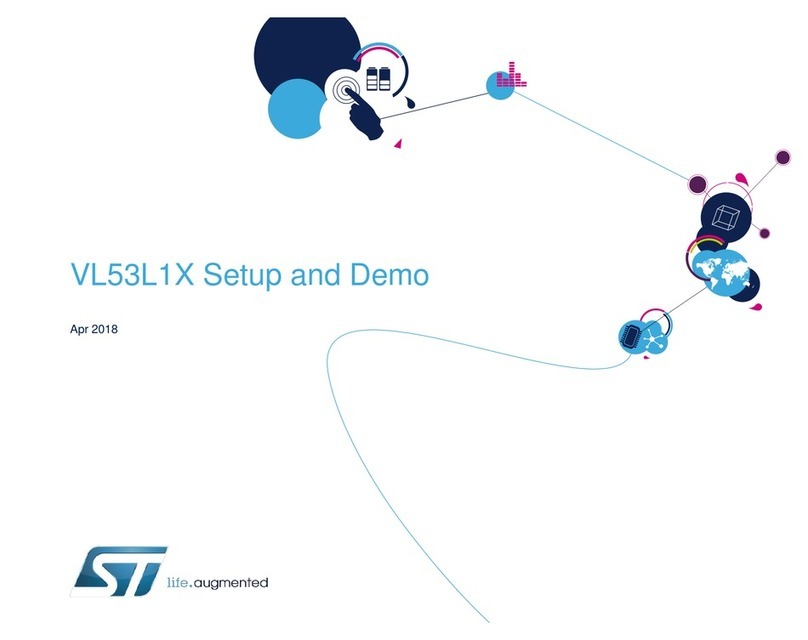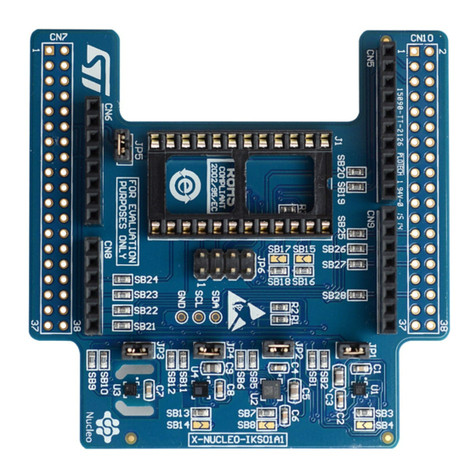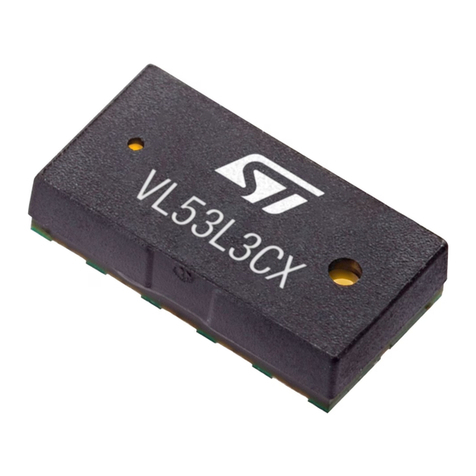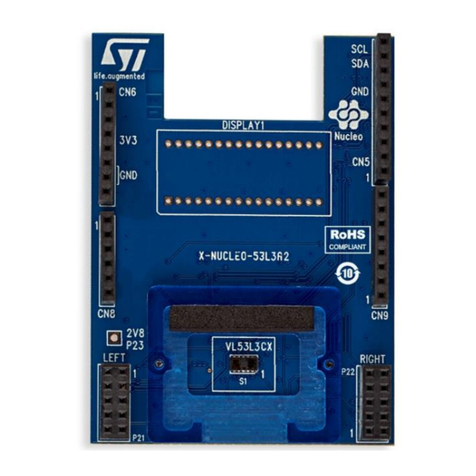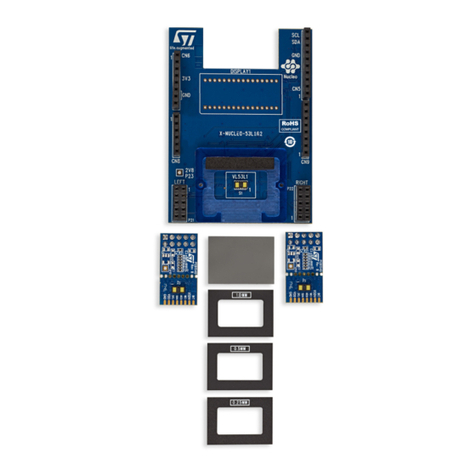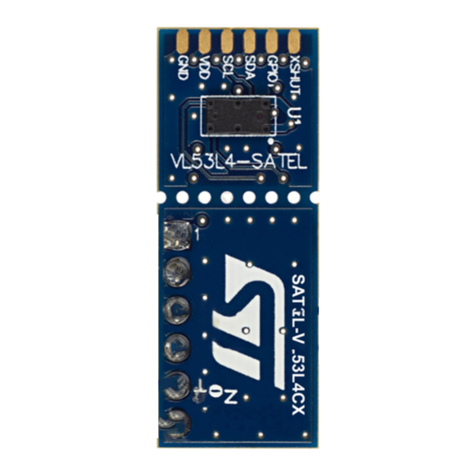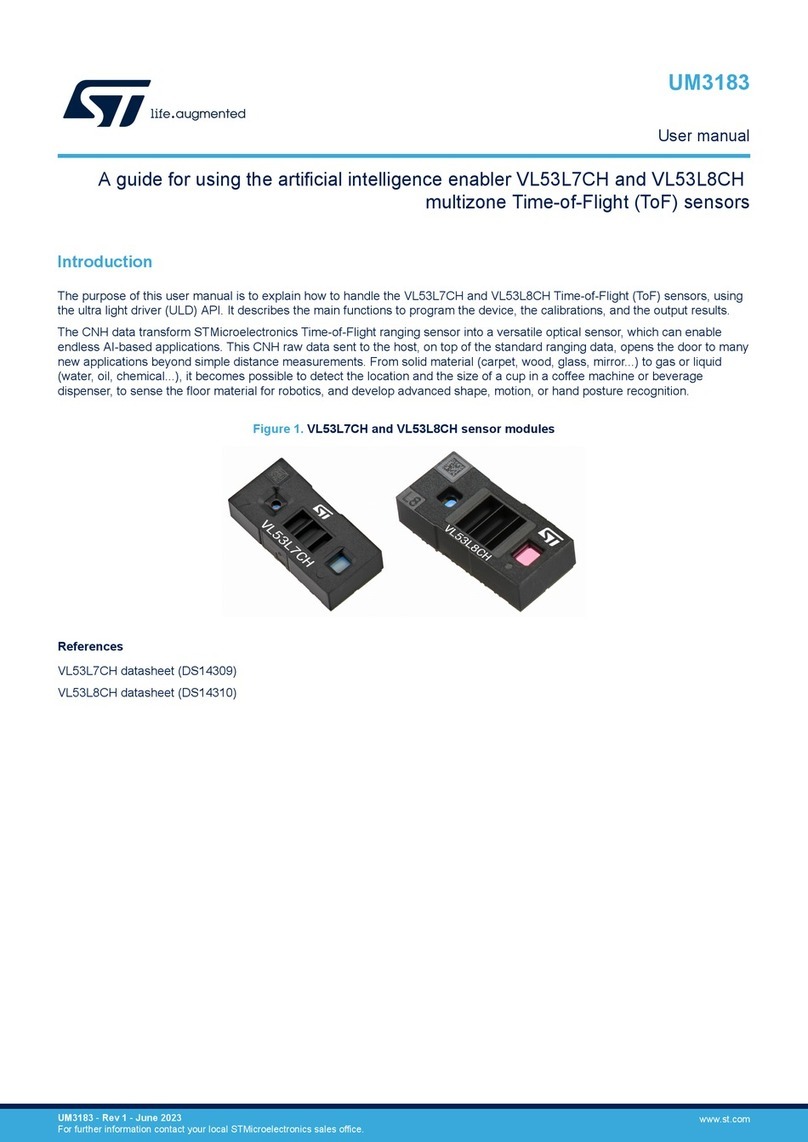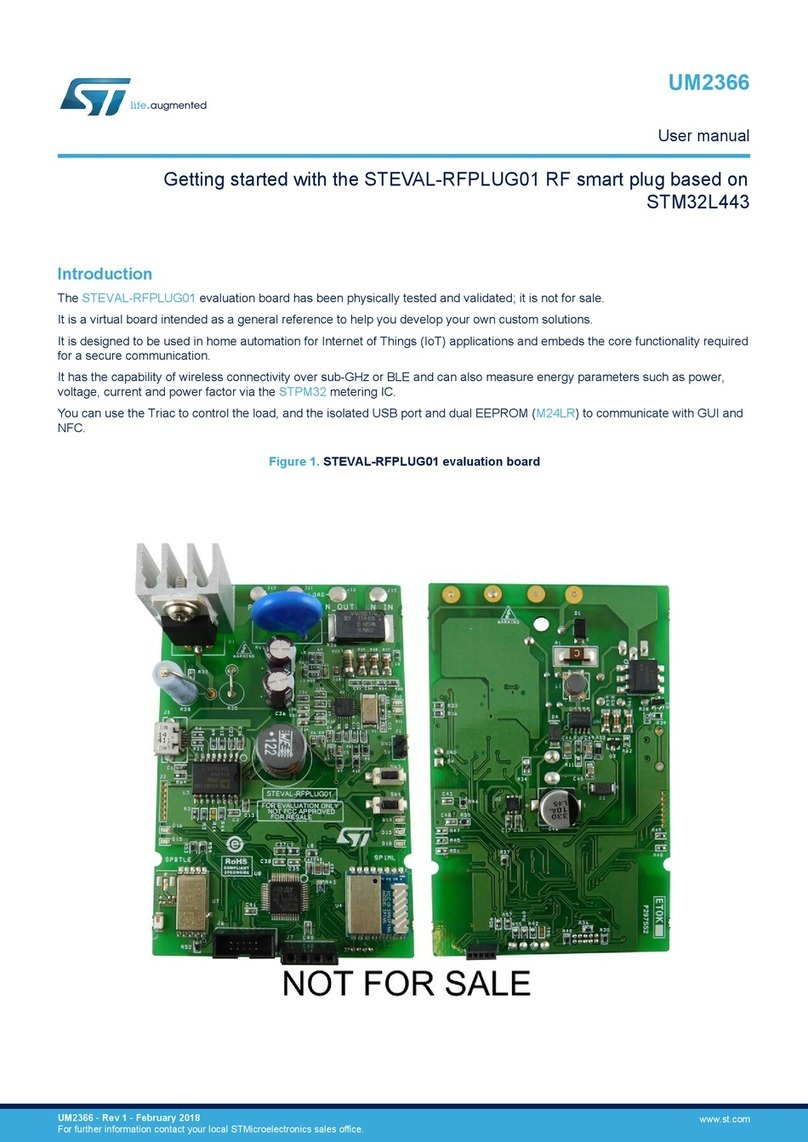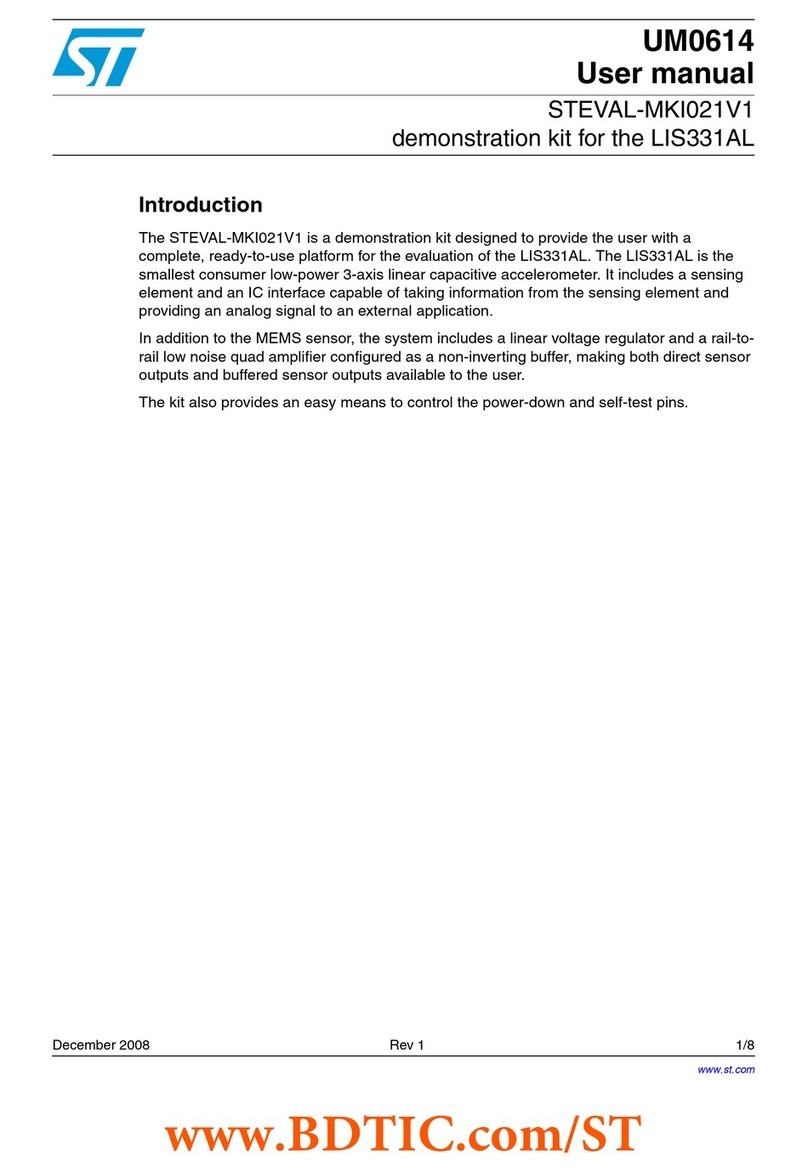PCB design rules AN4159
10/27 Doc ID 023639 Rev 3
Stencil design and solder paste application
The soldering paste thickness and pattern are important for the proper pressure sensor
mounting process.
●Stainless steel stencils are recommended
●Stencil thickness of 90 - 150 µm (3.5 - 6 mils) is recommended for screen printing
●The final soldering paste thickness should allow proper cleaning of flux residuals and
clearance between sensor package and PCB
●Stencil aperture should have a rectangular shape with dimensions up to 25 µm (1 mil)
smaller than PCB land
●The openings of the stencil for the signal pads should be between 70 - 80% of the PCB
pad area
●Optionally, for better solder paste release, the aperture walls should be trapezoidal and
the corners rounded
●The fine IC leads pitch requires accurate alignment of the stencil to the PCB. The
stencil and printed circuit assembly should be aligned to within 25 µm (1 mil) prior to
application of the solder paste
Process consideration
In case of use of no self-cleaning solder paste, proper board washing after soldering must
be done to remove any possible source of leakage between pads due to flux residues.
The PCB soldering profile depends on the number, size and placement of components on
the board. The soldering profile should be defined by experience more than the pressure
sensor soldering profile only.
No solder material reflow on the side of the package is allowed since LGA packages show
metal trace out of package side.
Solder heat resistance and environmental specification:
The second level interconnect category on ST ECOPACK® lead-free package is marked on
the inner box label, in compliance with JEDEC Standard JESD97. Soldering conditions
maximum ratings are also marked on the same label.
LGA packages for pressure sensor are qualified for soldering heat resistance according to
JEDEC J-STD-020, in MSL3 condition.
4.1 Power supply and sequencing, fail-safe I/Os
There are 2 voltage supplies, VDD_IO and VDD in LPS331AP.
VDD is the core voltage supply to the internal circuits, power on reset, and sensor.
VDD_IO is the supply for the I2C blocks and interface signals.
The operating voltage for both VDD_IO and VDD is from 1.71 V to 3.6 V.
In order to prevent possible leakage in the operational condition, it is necessary to ensure
VDD_IO <= VDD.
